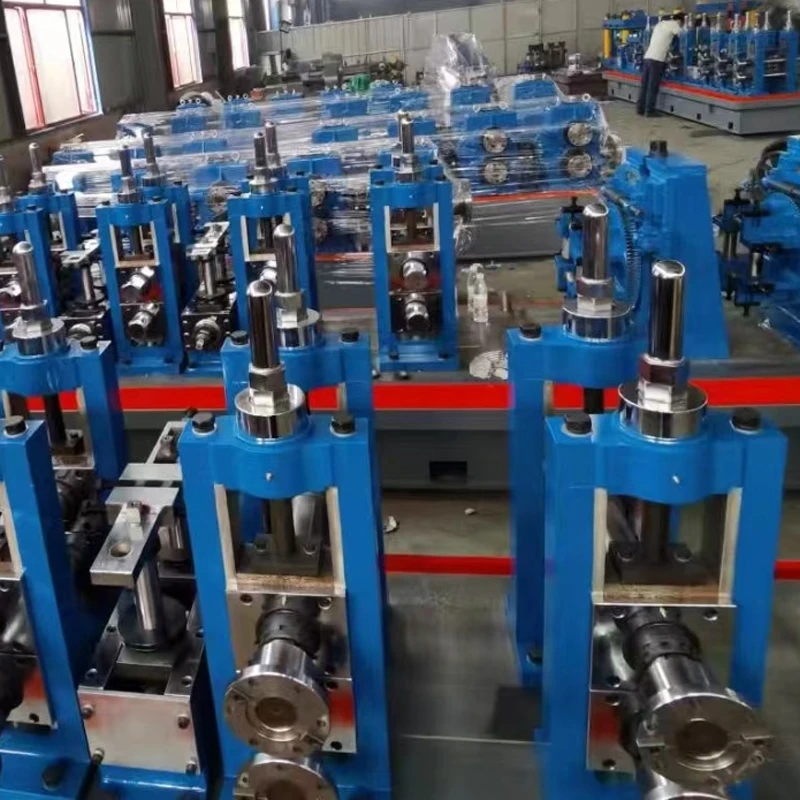Precision Cutting Techniques Using Advanced Pipe Laser Technology for Enhanced Efficiency
The Advancements and Applications of Pipe Laser Cutting Technology
In today's fast-paced industrial environment, companies are continuously seeking innovative solutions to enhance their manufacturing processes. One such advancement that has gained significant traction is pipe laser cutting technology. This method, which employs high-powered lasers to cut through various materials, has transformed how industries approach pipe fabrication, delivering unparalleled precision, efficiency, and versatility.
How Pipe Laser Cutting Works
Pipe laser cutting utilizes state-of-the-art laser technology to cut pipes and tubes with extreme accuracy. The process begins when a laser beam is generated and focused onto the surface of the material. By adjusting the laser’s parameters, operators can control the intensity and speed of the cut, allowing for intricate designs and complex geometries. Unlike traditional cutting methods, which often rely on mechanical tools, pipe laser cutting minimizes material waste and reduces the risk of deformation, ensuring that the final product retains its original specifications.
One of the standout features of this technology is its ability to cut various materials, including metals like stainless steel, aluminum, and carbon steel, as well as non-metal materials. This versatility makes it a sought-after solution across multiple industries, including automotive, aerospace, architecture, and energy.
Advantages of Pipe Laser Cutting
1. Precision and Accuracy Pipe laser cutting technology achieves tolerances as tight as ±0.1 mm, which is crucial in industries where precision is key. This level of accuracy reduces the need for extensive post-processing work, saving both time and costs.
2. Complex Geometries With the ability to design intricate patterns, pipe laser cutting allows for the creation of complex shapes with ease. This capability is particularly important in sectors like architecture and automotive, where aesthetic design and functionality are paramount.
3. Speed and Efficiency The speed of laser cutting significantly reduces production time. High feed rates coupled with rapid setup times mean that manufacturers can improve their throughput, keeping up with the growing demands of the market.
pipe laser cutting

4. Minimal Material Waste With the precision of laser cutting, material waste is significantly minimized. The tightly controlled cuts lead to more finished parts being produced from a single piece of material, contributing to cost savings and a more sustainable manufacturing approach.
5. Automation and Integration Modern pipe laser cutting systems can be easily integrated into automated production lines. This integration allows for seamless operation and further enhances productivity by minimizing manual intervention.
Applications of Pipe Laser Cutting
The application of pipe laser cutting technology spans various sectors. In the automotive industry, it is commonly used for manufacturing exhaust systems and structural components where lightweight and durable materials are essential. The aerospace sector also benefits from this technology, utilizing it for the production of custom fittings and parts that require precision engineering.
In construction and architecture, pipe laser cutting is employed to create decorative elements as well as functional structural components. The ability to execute complex designs without compromising the integrity of the material enhances both the aesthetic and structural aspects of building projects.
Furthermore, the energy industry, particularly in the production of pipelines and tubing for oil and gas, has seen substantial benefits from this technology. The harsh conditions these materials often face require high standards of precision and quality, making pipe laser cutting an invaluable tool.
Future Trends
As technology continues to evolve, the future of pipe laser cutting looks promising. Innovations such as fiber laser technology are leading the way, offering even greater efficiency and improved energy consumption. Additionally, with the growing focus on sustainability, manufacturers are expected to employ more eco-friendly practices, making laser cutting a more attractive option.
In conclusion, pipe laser cutting has emerged as a revolutionary solution in the manufacturing landscape. Its numerous advantages and wide-ranging applications make it a critical component for industries aiming to improve their operational capabilities. As technology advances, the potential for pipe laser cutting will only expand, promising to deliver even more efficient, sustainable, and precise manufacturing solutions in the years to come.
-
High Frequency Straight Seam Welded Pipe Production Line-BzZhou Xinghua Machinery Equipment Manufacturing Co., LTD.|line pipe steel&welded gas pipeNewsJul.30,2025
-
High Frequency Straight Seam Welded Pipe Production Line-BzZhou Xinghua Machinery Equipment Manufacturing Co., LTD.|High Precision&Automated SolutionsNewsJul.30,2025
-
High Frequency Straight Seam Welded Pipe Production Line - BzZhou Xinghua Machinery Equipment Manufacturing Co., Ltd.NewsJul.30,2025
-
High Frequency Straight Seam Welded Pipe Production Line-BzZhou Xinghua Machinery Equipment Manufacturing Co., LTD.|Precision Welding, High EfficiencyNewsJul.30,2025
-
High Frequency Straight Seam Welded Pipe Production Line|BzZhou Xinghua|Precision Welding&EfficiencyNewsJul.30,2025
-
High Frequency Straight Seam Welded Pipe Production Line - BzZhou Xinghua|Precision Engineering&EfficiencyNewsJul.30,2025


